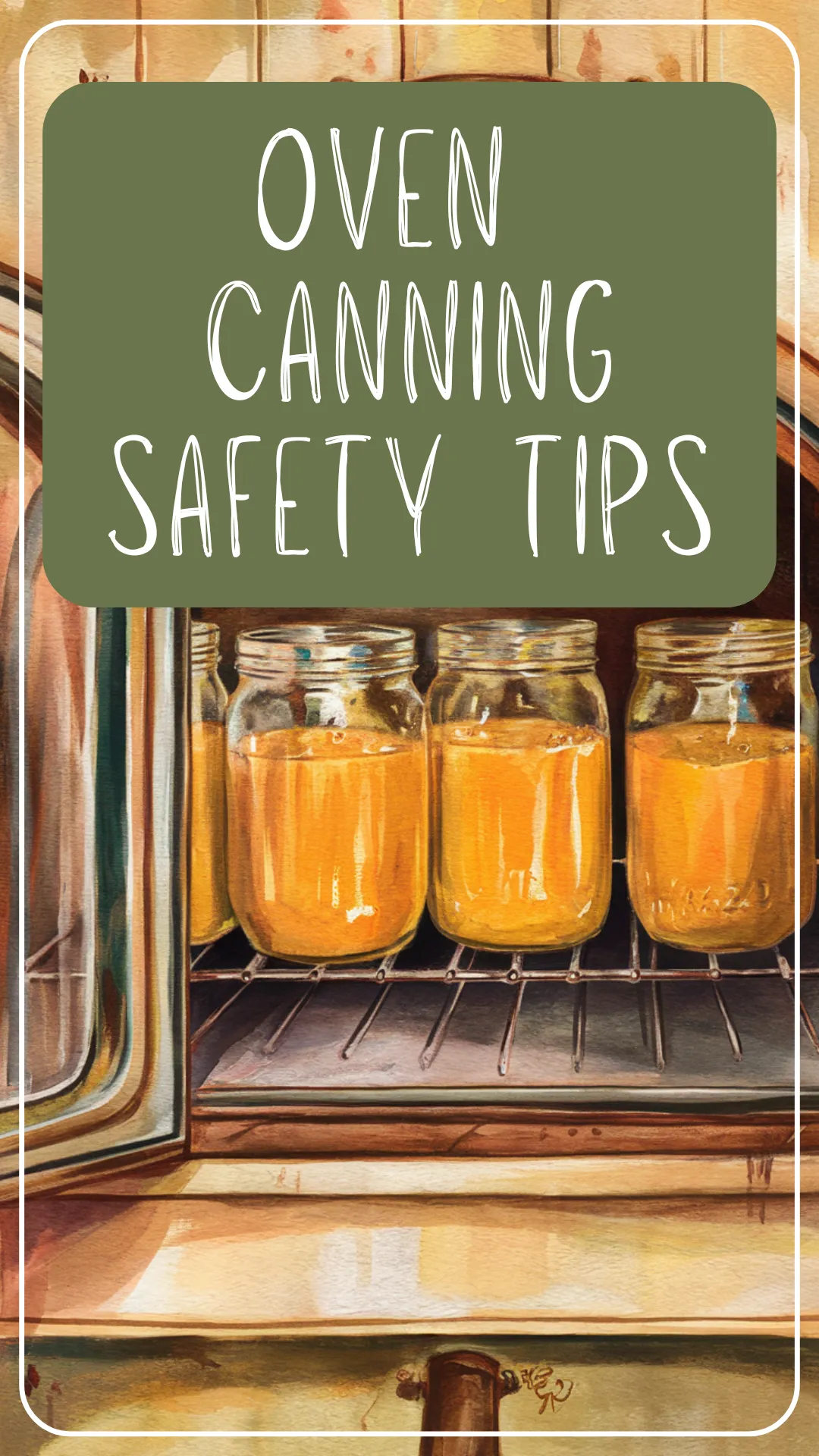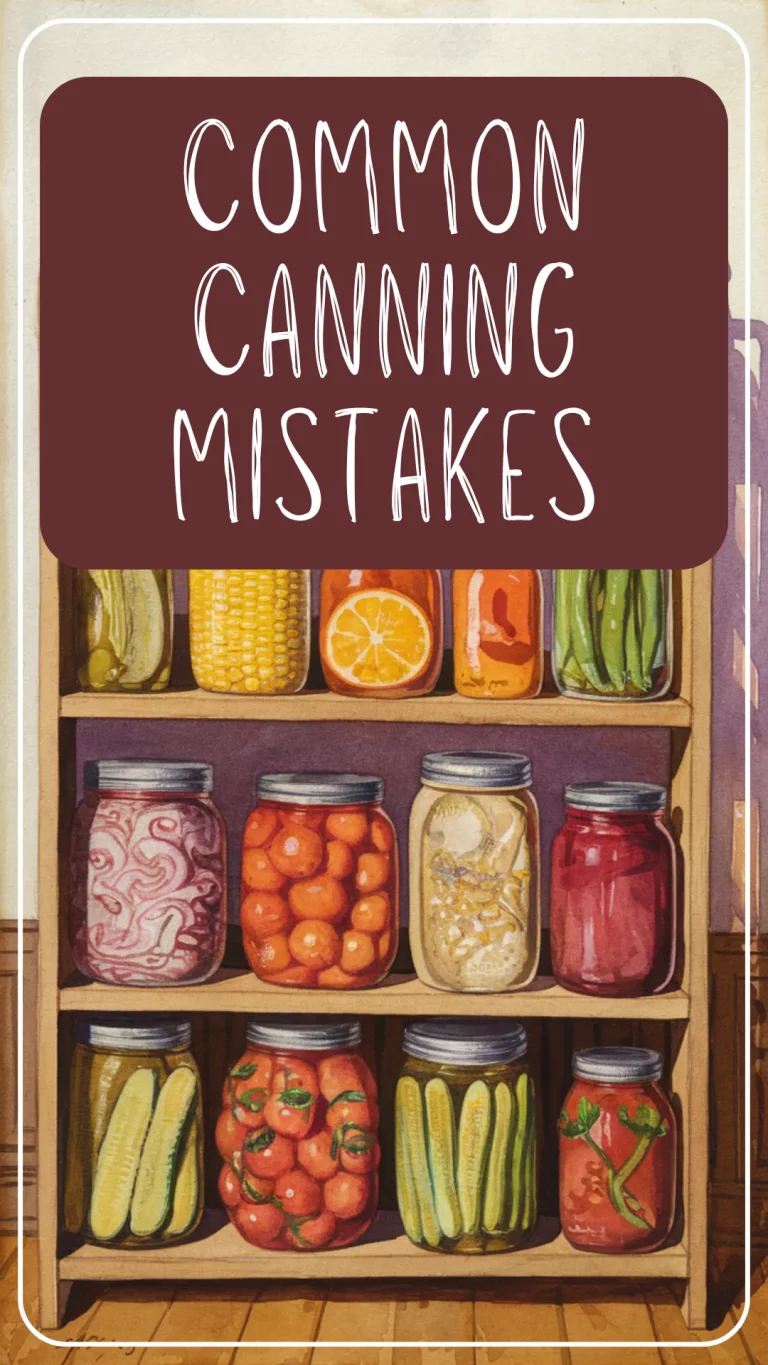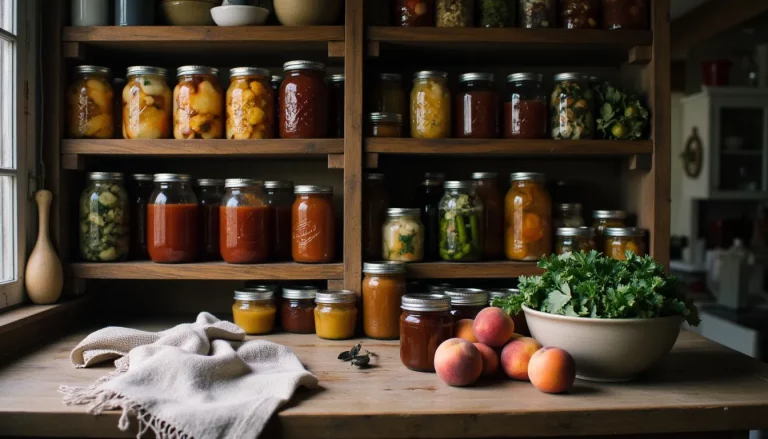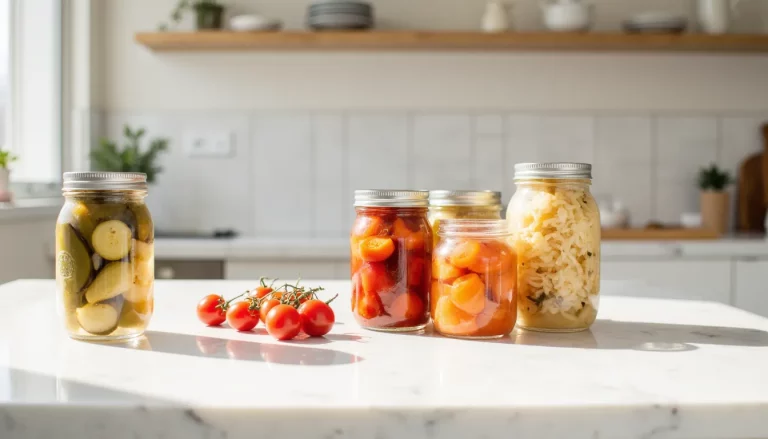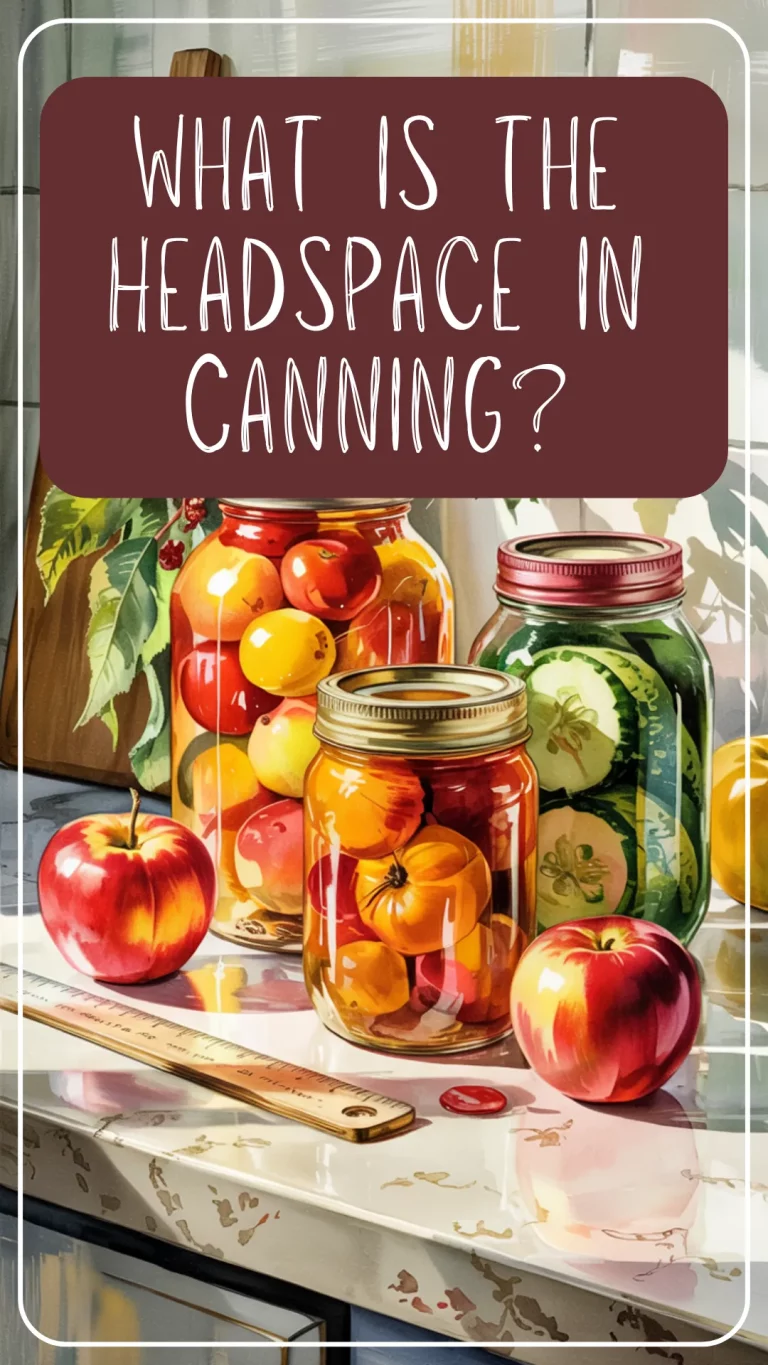Oven Canning – Why This is One Trend You Should AVOID!
Think oven canning is a shortcut for food storage? Here’s why the USDA and food safety experts say it’s not safe—and what to do instead for dry goods, jams, and more.
Inside this post:
Oven Canning Isn’t a Thing (And What to Do Instead)
We get it—you’re scrolling through TikTok or Pinterest and stumble across a video where someone seals up jars of dry goods by baking them in the oven. It looks easy. The jars “pop.” Everything looks sealed. And hey, they say they’ve been doing it this way for years.
But here’s the thing: oven canning isn’t safe, and it’s not considered a legitimate method of food preservation by the USDA or the National Center for Home Food Preservation (NCHFP). Just because it looks like it works doesn’t mean it’s actually protecting your food—or your family—from serious foodborne illness.
We’re going to give you the facts, explain the risks, and show you what to do instead to safely preserve all the pantry goodness you’re working hard to store. Let’s break it down.
1. What Is “Oven Canning,” Anyway?
When people say “oven canning,” they usually mean putting filled jars (often with dry foods or preserves) into the oven to heat them up and “seal” the lids. Some folks use it for dry goods like flour or oats. Others try it with jams or sauces. The method has been floating around for decades—but it’s recently seen a comeback thanks to social media.
And we totally understand the appeal:
- No big pot of boiling water
- No pressure canner
- Jars lining your counter with a satisfying “pop” as they seal? It looks great.
But the problem is… that “pop” isn’t telling the whole story. While the lids might seal from the heat of the oven, that doesn’t mean the contents are safe—or that dangerous bacteria have been properly destroyed.
2. Why Oven Canning Is Unsafe
“Oven canning is influenced by so many variable factors that it cannot be recommended as a safe method of food preservation.” USDA
Let’s be super clear here: oven canning is not a safe food preservation method. It might look like it works, but there are several reasons it’s considered risky—and why it’s strongly discouraged by food safety experts.
Here’s what makes oven canning a no-go:
Ovens don’t heat jars evenly
Oven heat is dry and inconsistent, especially compared to boiling water or pressurized steam. Your jars may be sitting in the same oven, but the internal temperature of the food inside each jar can vary a lot—and that’s a big problem when you’re trying to kill bacteria.
Dry heat doesn’t kill dangerous microorganisms
The biggest danger with low-acid foods is Clostridium botulinum, the bacteria that causes botulism. It can survive baking temperatures and thrive in sealed jars—especially if the contents weren’t heated thoroughly or processed correctly. Just because a lid seals doesn’t mean the food is safe.
Jars can crack or shatter
Canning jars are not made for dry oven heat. Unlike boiling water, which cushions the glass, oven heat is direct and can cause jars to crack or explode unexpectedly—especially if the jars have micro-flaws or uneven thickness.
The vacuum seal is misleading
Yes, you might hear a satisfying little “pop” as the lid seals. But this kind of seal doesn’t mean bacteria have been killed or that the food inside is safe. It just means a vacuum was created as the air cooled—not that the food was processed to safe temps.
We’re not saying people who use this method are bad cooks or careless—many are trying to follow what they’ve seen others do. But even if someone says “I’ve been doing it this way for years and never got sick,” the truth is: it only takes one bad batch.
3. What People Might Actually Mean: “Dry Canning”
Sometimes when folks talk about oven canning, they’re actually referring to something called dry canning. This method has been floating around since the 1940s and typically involves placing dry ingredients—like flour, oats, beans, or rice—into canning jars and baking them in the oven to “sterilize” or preserve them.
The idea is that the dry heat kills off bugs, eggs, and moisture, making pantry staples last longer. And while it may sound harmless (after all, it’s just dry food in the oven), there are a few reasons this method is not recommended by food safety experts today.
Why Dry Canning Isn’t Considered Safe:
- Dry heat is unpredictable – It doesn’t distribute evenly throughout the jar or the food inside.
- Jars can break in the oven – Again, they’re not made for dry baking conditions.
- Moisture may still be present – Especially in grains or powders, which can trap humidity and create an environment for spoilage or mold.
- False sense of security – Just like with oven canning, a sealed lid doesn’t equal safe food.
The USDA and National Center for Home Food Preservation both advise against dry canning. The risks of contamination, spoilage, or cracked jars simply aren’t worth it when there are better, safer options.
4. What You Should Do Instead
The good news? You can safely preserve just about everything people try to oven can—you just need the right method for the type of food you’re working with.
Here’s what to use instead of oven canning:
For jams, jellies, pickles, and other high-acid foods:
Use a water bath canner:
- A large pot with boiling water and a rack to lift jars off the bottom
- Reaches the temperatures needed to kill bacteria in high-acid foods
- Ideal for fruits, tomato products (with added acid), chutneys, and pickles
For low-acid foods like meats, soups, beans, and vegetables:
Use a pressure canner:
- Uses steam under pressure to reach 240°F+, the temperature needed to kill botulism spores
- The only USDA-approved method for canning low-acid foods safely
- Yes, it’s a little more involved—but totally doable, even for beginners
For dry goods like rice, flour, and beans:
Use safe long-term storage methods:
- Store in Mylar bags with oxygen absorbers inside food-grade buckets
- Or vacuum seal in canning jars using a vacuum sealer with a jar attachment
- Keep in a cool, dark, dry place to maximize shelf life
- These methods reduce moisture and oxygen without using heat (safer and more effective)
Bottom line: you have great options for preserving just about anything you want to store. They may not go viral on TikTok, but they will give you a stocked pantry you can trust.
5. “But I Saw It Online…”
We totally get it. Social media is full of clever, creative kitchen hacks—and some of them really do make life easier. But when it comes to canning and long-term food storage, “seen it on TikTok” doesn’t mean it’s safe.
Just because it looks sealed…
Doesn’t mean it was processed correctly. A popping lid or vacuum seal can be deceiving—it tells you air got pulled out, not that bacteria or spores were destroyed. And unfortunately, botulism has no smell, no taste, and no visible signs. You can’t tell a jar is unsafe just by looking at it.
“But that creator has done it for years without getting sick…”
Maybe. But luck isn’t the same as safety. Food safety guidelines exist for a reason—and one bad batch can make someone very, very sick. Especially with low-acid foods, botulism risk is real. Why take the chance when there are safe, science-backed methods available?
Canning is science, not just tradition
We love a good old-school recipe, but food preservation is one area where modern testing and updated guidelines matter. What worked in Grandma’s kitchen before we understood bacteria may not be something we want to copy today.
We’re not here to shame anyone—just to empower home canners with reliable info so you can preserve food with confidence and peace of mind.
6. Trusted Resources to Learn More
If you’re serious about canning (or even just canning-curious), it helps to know where to get the real, up-to-date information. These trusted sources will steer you right every time:
- USDA Complete Guide to Home Canning
Free to download, and packed with detailed, tested instructions
https://nchfp.uga.edu/publications/publications_usda.html - National Center for Home Food Preservation (NCHFP)
Offers research-based info, safety guidelines, and tested recipes
https://nchfp.uga.edu - Ball® and Kerr® Canning Brands
The folks behind the jars! Their websites and books include modern, tested recipes - University Extension Services
Many states (like Utah, Penn State, and Washington) offer local canning guides and even classes
These aren’t just helpful—they’re science-backed and safety-approved. Bookmark them, browse them, and feel good about learning from the best.
ou’ve Got This!
If you’ve ever thought about oven canning or seen it online, no judgment—it’s easy to get caught up in “kitchen shortcut” trends. But now you know the facts: oven canning and dry canning aren’t safe methods, and they’re not recommended by any food preservation authority.
And the best part? You’ve got awesome alternatives that are safe, reliable, and totally beginner-friendly. Whether you’re sealing up jars of jam, broth, or beans, you’re doing it the right way—and building a pantry you can truly trust.
Here’s to jars that pop for all the right reasons.
